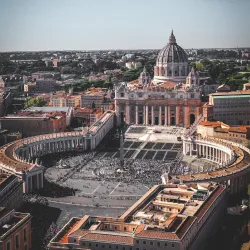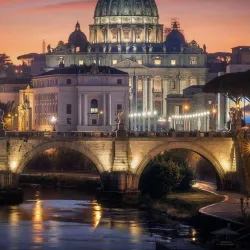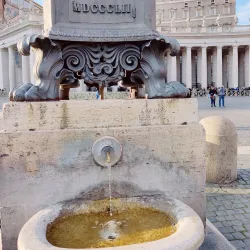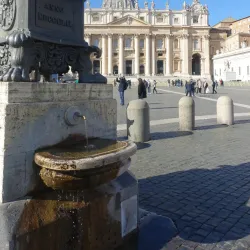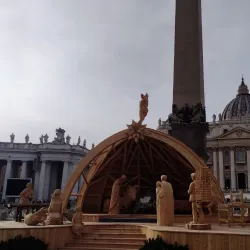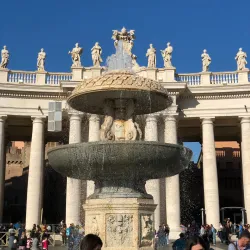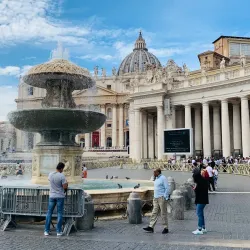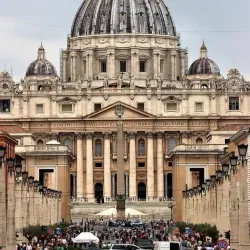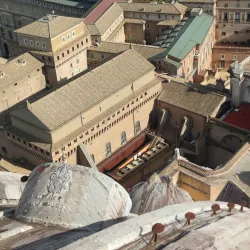Quality of life in Vatican City
Vatican City, the smallest independent state in the world, is a unique enclave within Rome, Italy. It serves as the spiritual and administrative center of the Roman Catholic Church, housing the Pope and the central governing body of the Church. Despite its small size, Vatican City is a powerhouse of religious, cultural, and historical significance.
The city is renowned for its stunning architecture, including the iconic St. Peter's Basilica and the Sistine Chapel, which attract millions of visitors each year. Vatican City is not only a place of pilgrimage for Catholics but also a treasure trove of art and history, with its museums housing some of the world's most famous artworks.
History and Culture
Vatican City's history is deeply intertwined with the history of Christianity and the Catholic Church. Established as an independent state in 1929 with the Lateran Treaty, its roots trace back to the early Christian community and the martyrdom of St. Peter, one of Jesus' apostles, who is believed to be buried beneath St. Peter's Basilica.
Throughout the centuries, Vatican City has been a center of art and culture, patronizing artists like Michelangelo and Raphael, whose works continue to draw admiration. The Vatican Museums, established in the 16th century, are a testament to the city's long-standing commitment to preserving and showcasing art and history.
Culturally, Vatican City is a melting pot of traditions and influences, reflecting its global reach and the diverse backgrounds of its clergy and visitors. The city hosts numerous religious ceremonies and events, such as the Papal Masses and the Easter celebrations, which are attended by thousands of pilgrims from around the world.
Things to do in Vatican City
Visitors to Vatican City can explore the awe-inspiring St. Peter's Basilica, one of the largest churches in the world, known for its Renaissance architecture and the magnificent dome designed by Michelangelo. The Vatican Museums offer a journey through centuries of art, featuring the Raphael Rooms and the Sistine Chapel, with its famous ceiling painted by Michelangelo.
The Vatican Gardens, a serene and beautifully landscaped area, provide a peaceful retreat from the bustling city. Guided tours offer insights into the history and significance of these gardens, which cover about half of the Vatican's territory.
Attending a Papal Audience or Mass is a unique experience, offering a glimpse into the spiritual life of the Vatican. These events are held regularly and provide an opportunity to see the Pope and participate in the religious life of the city.
Weather in Vatican City
Vatican City, Vatican City experiences a Mediterranean climate characterized by hot, dry summers and mild, wet winters. The city receives an average annual precipitation of approximately 30 inches (762 mm), with November being the wettest month, averaging around 4 inches (101 mm) of rainfall.
Seasonal Breakdown
- Spring (March to May) - Temperatures gradually rise from an average high of 60°F (16°C) in March to 73°F (23°C) in May. Rainfall decreases during this period, with March receiving the most precipitation, averaging around 3 inches (76 mm).
- Summer (June to August) - Temperatures gradually rise from an average high of 60°F (16°C) in March to 73°F (23°C) in May. Rainfall decreases during this period, with March receiving the most precipitation, averaging around 3 inches (76 mm).
- Autumn (September to November) - Temperatures gradually rise from an average high of 60°F (16°C) in March to 73°F (23°C) in May. Rainfall decreases during this period, with March receiving the most precipitation, averaging around 3 inches (76 mm).
- Winter (December to February) - Temperatures gradually rise from an average high of 60°F (16°C) in March to 73°F (23°C) in May. Rainfall decreases during this period, with March receiving the most precipitation, averaging around 3 inches (76 mm).
Notable Weather Events
- Occasional heatwaves during the summer months.
- Heavy rainfall events in autumn, particularly in November.
- Rare instances of frost during the winter months.
Vatican City's Political Climate
Vatican City, the smallest independent state in the world, is unique in its political structure and governance. As the spiritual and administrative center of the Roman Catholic Church, its political climate is deeply intertwined with religious leadership. The Pope serves as the head of state, wielding both spiritual and temporal authority. The governance of Vatican City is characterized by a theocratic monarchy, where the Pope holds supreme power, supported by the Roman Curia, which assists in the administration of the Church's affairs.
Historically, Vatican City has been a focal point for religious and political influence, with its roots tracing back to the establishment of the Papal States. In modern times, the Vatican continues to play a significant role in global religious and diplomatic matters. The city-state is known for its commitment to social justice, peace, and humanitarian efforts, often advocating for these issues on the world stage.
Vatican City's political climate is also shaped by its commitment to sustainability and environmental stewardship, as evidenced by the encyclical 'Laudato Si'' issued by Pope Francis, which calls for action on climate change and care for the environment. This reflects the Vatican's influence on global discussions about environmental policies and ethical governance.
Recent trends in Vatican City's political landscape include efforts to increase transparency and accountability within the Church, addressing issues such as financial management and clerical abuse. These initiatives are part of a broader movement towards reform and modernization within the Vatican's governance structures.
Political Quick Facts
- Pope Francis - The current Pope, known for his progressive views on social issues and environmental advocacy.
- Cardinal Pietro Parolin - The Vatican Secretary of State, influential in diplomatic and administrative matters.
- Cardinal Luis Antonio Tagle - Prefect of the Congregation for the Evangelization of Peoples, known for his work in social justice.
Quick Facts
"Key Takeaways"
Vatican City is the spiritual and administrative heart of the Roman Catholic Church.
It is home to iconic landmarks such as St. Peter's Basilica and the Sistine Chapel.
The Vatican Museums house an extensive collection of art and historical artifacts.

